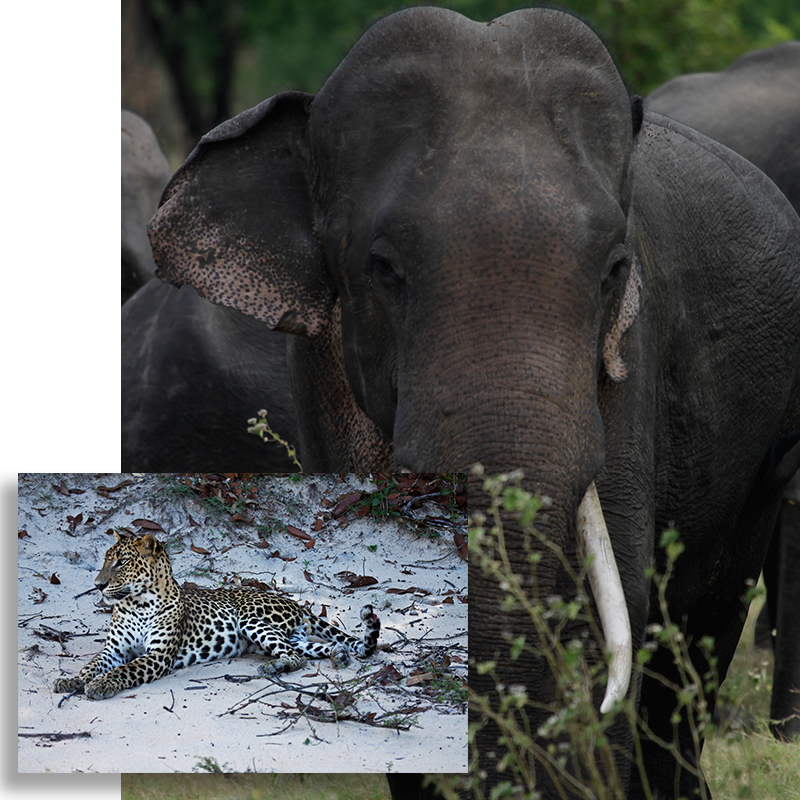

 The Yala National Park situated in the southeast corner of Sri Lanka falling under the Southern and Uva Provinces is the most visited National Park in the country by both foreign and local tourists. The second largest after Wilpattu Natinoal Park, Yala was first reserved as a ‘game sanctuary’ by the British in 1894 and later a wildlife sanctuary in 1900. It received National Park status in 1938.
The Yala National Park situated in the southeast corner of Sri Lanka falling under the Southern and Uva Provinces is the most visited National Park in the country by both foreign and local tourists. The second largest after Wilpattu Natinoal Park, Yala was first reserved as a ‘game sanctuary’ by the British in 1894 and later a wildlife sanctuary in 1900. It received National Park status in 1938.
Yala National Park is divided into 5 blocks, block I of Ruhuna National Park was established on 25th February 1938, block II on 3rd September 1954, block III on 28th April 1967, block IV on 9th October 1969 and block V on 5th October 1973. Blocks I & II being open to the public, and it also contains a block run as a Strict Nature Reserve. The Park comprises of 97,881 hectares in extend.
Yala comprises of Dry mixed monsoon forests, thorn forests, grasslands, wetlands, lagoons and beaches with an annual temperature of 27 C. Yala receives its main rainfall from the Northeast Monsoon during the months of September to December with a mean annual fall of 900-130mm. there are scattered around the Park a large number of rock outcrops with caves and kema (pools) and also several freshwater lakes. This combination of different topographical features makes it a unique ecosystem for a variety of animals.
Yala is home to 44 species of mammals including the Elephant, Leopard, Sloth Bear, Spotted Deer, Water Buffalo, and the Golden Palm Civet. Its Leopard population is considered one of the highest dense populations of Leopards in the world. Yala also is home to 215 species of birds including 6 out of the 33 endemic species in Sri Lanka. It further holds a variety of reptiles including the Crocodile, 5 species of turtles and many snakes and lizards including the endemic Sri Lankan Krait, Sri Lankan Flying snake, Wiegmann’s agama or the Sri Lankan Kangaroo Lizard.
Main attractions:Best Season: Between September to March (when the water levels are low)
Routes: There are three main routes to the Park from Colombo. All distances are from Colombo.
Entrances: the Park has two entrances